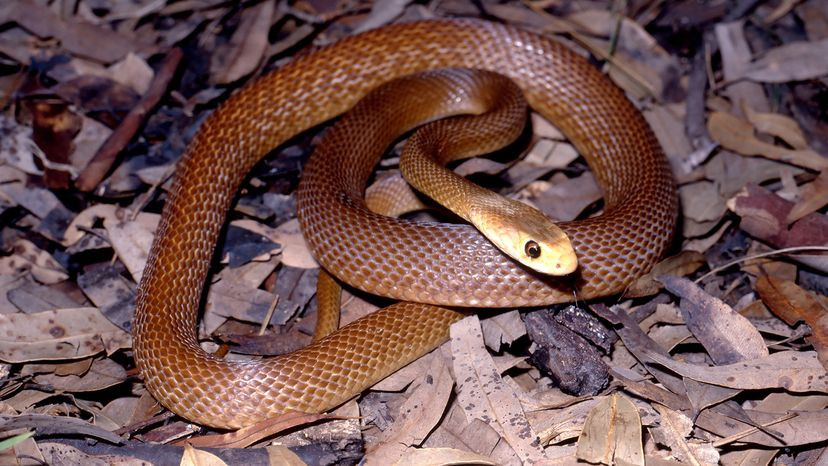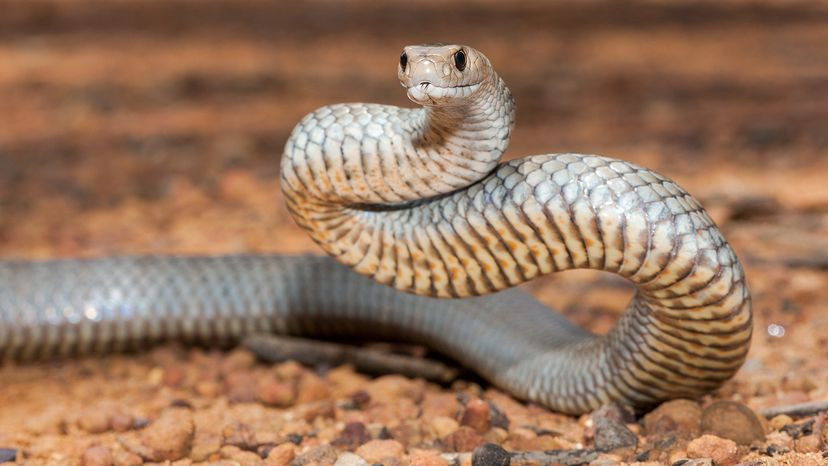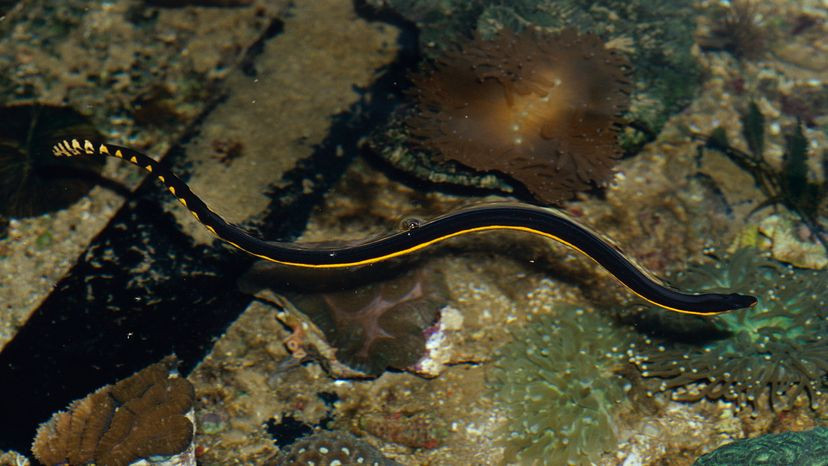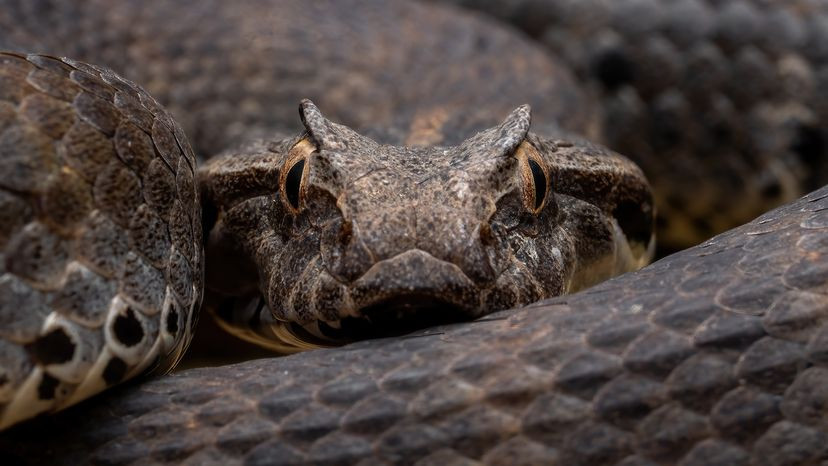How Fast Can Snakes Travel, you ask? Snakes, those fascinating and sometimes feared reptiles, exhibit a surprising range of speeds depending on their species and environment. With SIXT.VN, exploring the diverse landscapes of Vietnam, where many snake species reside, becomes an adventure, as you’ll be equipped with reliable transportation and local insights to make your journey smooth and safe. Discover the world of serpentine speedsters with our guide, offering travel tips and unveiling how to experience Vietnam’s wildlife responsibly, while ensuring every journey is memorable, comfortable, and secure.
1. Understanding Snake Locomotion
Before diving into specific speeds, it’s crucial to understand how snakes move. Unlike animals with legs, snakes use various methods of locomotion, each influencing their speed.
1.1. Types of Snake Movement
- Lateral Undulation: The most common type, where snakes move in a series of S-shaped curves, pushing against surfaces.
- Rectilinear Movement: A slow, caterpillar-like movement used by heavy-bodied snakes, contracting and expanding sections of their body.
- Concertina Movement: Used in narrow spaces, where the snake anchors parts of its body and pulls the rest forward.
- Sidewinding: Employed on loose sand or slippery surfaces, where the snake throws its body sideways in loops.
Understanding these movements helps appreciate the diverse ways snakes navigate their environments.
1.2. Factors Affecting Snake Speed
Several factors influence how fast a snake can travel.
- Species: Different species have different body structures and musculature, affecting their speed.
- Size: Larger snakes might have more power, but smaller snakes can be quicker and more agile.
- Terrain: Snakes move differently on sand, grass, or water, each affecting their speed.
- Motivation: A snake hunting prey or escaping danger will move faster than one simply basking in the sun.
- Temperature: Because snakes are cold-blooded, they move more quickly in hotter temperatures than in cooler ones.
2. The Speed Demons: Fastest Snake Species
While pinpointing the exact speed of every snake species is challenging, some are known for their remarkable swiftness.
2.1. Coastal Taipan
 Coastal taipan in its natural habitat, blending seamlessly with the surroundings
Coastal taipan in its natural habitat, blending seamlessly with the surroundings
The coastal taipan (Oxyuranus scutellatus) is renowned for its striking speed and highly potent venom.
2.1.1. Key Characteristics
- Habitat: Native to northern and eastern Australia and New Guinea.
- Speed: Known for exceptionally fast strikes, crucial for both hunting and defense.
- Venom: One of the most venomous snakes in the world, making it a dangerous species.
2.1.2. Hunting and Defense
Coastal taipans rely on their speed to quickly subdue prey, primarily rodents and birds. Their rapid strike ensures they can deliver a venomous bite before the prey can escape. When threatened, they are equally quick to defend themselves, making them a formidable adversary.
2.2. Eastern Brown Snake
 Eastern Brown Snake basking on a rock in the Australian outback, showcasing its slender body
Eastern Brown Snake basking on a rock in the Australian outback, showcasing its slender body
The eastern brown snake (Pseudonaja textiles) is another speedster from Australia, famous for its agility and potent venom.
2.2.1. Key Characteristics
- Habitat: Found throughout eastern and central Australia.
- Speed: Known for its incredibly fast striking speed, essential for capturing prey.
- Venom: Possesses the second most toxic venom of any land snake.
2.2.2. Speed and Aggression
Eastern brown snakes are notoriously fast and can be aggressive if they feel threatened. Their speed allows them to strike quickly, making them one of the most dangerous snakes in Australia. They primarily hunt small mammals, and their venom is highly effective in immobilizing their prey.
2.3. Black Mamba
The black mamba (Dendroaspis polylepis) is one of the fastest moving snakes on land.
2.3.1. Key characteristics
- Habitat: Savannas and rocky hills of Southern and Eastern Africa
- Speed: Can reach speeds of up to 12.5 mph (20 km/h) in short bursts
- Venom: Highly venomous and can strike multiple times in quick succession
2.3.2. Hunting and Defense
Black mambas use their speed to ambush prey and to escape from predators. They are known for their aggressive behavior when threatened, making them a dangerous snake to encounter.
2.4. Common Garter Snake
The common garter snake (Thamnophis sirtalis) is known for its speed and adaptability.
2.4.1. Key characteristics
- Habitat: North America
- Speed: Can reach speeds of up to 10 mph (16 km/h) in short bursts
- Venom: Mildly venomous, but not harmful to humans
2.4.2. Hunting and Defense
Garter snakes use their speed to hunt small prey such as amphibians, fish, and insects. They are not aggressive and will usually flee when threatened.
3. Striking Speed vs. Travel Speed
It’s important to differentiate between a snake’s striking speed and its overall travel speed. Striking speed refers to how quickly a snake can lunge and bite, while travel speed is how fast it can move across a distance.
3.1. Striking Speed
Snakes like the common death adder and coastal taipan are known for their lightning-fast strikes, which are crucial for ambushing prey and defending against predators. These strikes happen in milliseconds, making them almost imperceptible to the human eye.
3.2. Travel Speed
Travel speed, on the other hand, is the pace at which a snake can cover ground. While not as dramatic as striking speed, it’s still an important factor in hunting, escaping, and finding mates.
4. Snake Speed and the Environment
The environment plays a significant role in a snake’s speed and movement capabilities. Different terrains require different adaptations and techniques.
4.1. Terrestrial Environments
On land, snakes use various forms of locomotion, as discussed earlier. The type of terrain affects which method is most effective.
4.1.1. Grasslands and Forests
In grasslands and forests, lateral undulation is the most common movement style. Snakes push against the ground, rocks, and vegetation to propel themselves forward.
4.1.2. Deserts and Sandy Areas
Deserts and sandy areas pose a challenge due to the loose substrate. Snakes like the sidewinder have adapted to this environment by moving sideways, minimizing contact with the ground and preventing slippage.
4.2. Aquatic Environments
Some snakes are excellent swimmers, adapted to life in water. Their body structure and movement styles are optimized for aquatic locomotion.
4.2.1. Sea Snakes
Sea snakes, such as the yellow-bellied sea snake, have flattened tails that act as paddles, allowing them to move swiftly through the water. They are highly venomous and inhabit tropical waters.
4.2.2. Freshwater Snakes
Freshwater snakes, like some species of water moccasins, are also adept swimmers. They use lateral undulation to propel themselves through the water, hunting fish, amphibians, and other aquatic prey.
5. How Fast Can Snakes Travel: Specific Examples
Let’s look at some specific examples to give you a better idea of snake speeds.
5.1. Yellow-Bellied Sea Snake
 Yellow-bellied sea snake swimming in the Pacific Ocean, showcasing its distinctive coloration
Yellow-bellied sea snake swimming in the Pacific Ocean, showcasing its distinctive coloration
The yellow-bellied sea snake (Hydrophis platurus) is a prime example of aquatic adaptation, showcasing impressive swimming abilities.
5.1.1. Key Characteristics
- Habitat: Tropical waters of the Pacific and Indian Oceans.
- Speed: Excellent swimmers, using their paddle-like tail for propulsion.
- Adaptations: Ability to stay submerged for extended periods, hunting fish and other marine life.
5.1.2. Swimming Speed
While not as fast as some terrestrial snakes on land, the yellow-bellied sea snake can swim at impressive speeds in the water, navigating ocean currents with ease. Their streamlined body and specialized tail make them efficient swimmers.
5.2. Common Death Adder
 Common death adder camouflaged in the Australian leaf litter, ready to ambush its prey
Common death adder camouflaged in the Australian leaf litter, ready to ambush its prey
The common death adder (Acanthophis antarcticus) is an ambush predator with one of the fastest strikes in the snake world.
5.2.1. Key Characteristics
- Habitat: Native to Australia.
- Speed: Known for its incredibly fast strike, used to ambush prey.
- Hunting: Lies in wait for prey to come near before striking.
5.2.2. Ambush Tactics
Common death adders are masters of camouflage, blending seamlessly into their environment. They wait patiently for prey, such as small mammals and birds, to come within striking distance. Their lightning-fast strike ensures a successful hunt.
6. Snake Speed in Popular Culture
Snakes have always been a source of fascination and fear in human culture, often depicted in myths, legends, and movies.
6.1. Myths and Legends
In many cultures, snakes are symbols of wisdom, healing, and transformation. Their ability to shed their skin is often associated with rebirth and renewal.
6.2. Snakes in Movies
Movies often portray snakes as menacing creatures, exaggerating their speed and aggression. While some snakes are indeed dangerous, most are not aggressive towards humans unless provoked.
7. Safety Tips When Encountering Snakes
Encountering a snake in the wild can be a thrilling but potentially dangerous experience. Here are some safety tips to keep in mind.
7.1. Stay Calm
If you encounter a snake, the first thing to do is stay calm. Avoid sudden movements, which can startle the snake and provoke it to strike.
7.2. Keep Your Distance
Give the snake plenty of space. Most snakes will not attack unless they feel threatened, so maintaining a safe distance is crucial.
7.3. Avoid Provoking
Never try to handle or provoke a snake. Even non-venomous snakes can bite, and it’s best to leave them alone.
7.4. Wear Protective Clothing
When hiking in areas known to have snakes, wear long pants and sturdy boots to protect your legs and feet.
7.5. Seek Medical Attention
If you are bitten by a venomous snake, seek medical attention immediately. Antivenom is most effective when administered quickly.
8. Exploring Vietnam with SIXT.VN
Vietnam is home to a variety of snake species, from the non-venomous to the highly venomous. Exploring the country’s diverse landscapes requires reliable transportation and local expertise.
8.1. Convenient Airport Transfer
Arrive in Vietnam stress-free with SIXT.VN’s convenient airport transfer service. Our professional drivers will ensure a smooth and comfortable ride to your hotel, allowing you to start your adventure without any hassles.
8.2. Wide Range of Accommodation Options
SIXT.VN offers a wide range of accommodation options to suit every budget and preference. From luxury hotels to cozy guesthouses, we have you covered.
8.3. Must-Visit Attractions
Discover Vietnam’s rich culture and natural beauty with SIXT.VN’s curated tours to must-visit attractions. Explore ancient temples, bustling markets, and stunning landscapes with our experienced guides.
8.4. Flexible Flight Booking
Book your flights to Vietnam with ease through SIXT.VN. We offer flexible booking options and competitive prices to ensure a seamless travel experience.
8.5. Tailored Hanoi Tours
Experience the best of Hanoi with SIXT.VN’s tailored tour packages. Whether you’re interested in history, culture, or cuisine, we have a tour that’s perfect for you.
9. Understanding Search Intent
9.1. Informational Intent
Users searching “how fast can snakes travel” are typically looking for information about the speed of different snake species, factors affecting their speed, and comparisons between striking speed and travel speed.
9.2. Navigational Intent
Some users may be looking for specific websites or resources related to snake speeds, such as scientific articles, educational websites, or reptile databases.
9.3. Commercial Intent
While less common, some users may be interested in commercial aspects, such as purchasing snake-related products or booking wildlife tours.
9.4. Transactional Intent
Users with transactional intent may be looking to book flights, hotels, or tours related to snake habitats or wildlife expeditions.
9.5. Local Intent
Users may be searching for local reptile exhibits, zoos, or educational centers where they can learn more about snakes.
10. The Role of Venom in Snake Speed
Venom plays a crucial role in how snakes hunt and defend themselves, and it’s closely linked to their speed.
10.1. Venom Delivery
Snakes like the taipan and eastern brown snake have evolved to deliver venom quickly and efficiently, often striking multiple times in rapid succession. This speed is essential for subduing prey and neutralizing threats.
10.2. Types of Venom
Different snakes have different types of venom, each with unique effects. Some venoms are neurotoxic, affecting the nervous system, while others are hemotoxic, affecting the blood. The type of venom can influence how quickly a snake needs to strike to ensure a successful hunt.
11. Case Studies: Snake Speed in Action
Examining specific case studies can provide insights into how snakes use their speed in real-world scenarios.
11.1. Hunting Strategies
Snakes like the green mamba rely on a combination of speed and camouflage to ambush prey. They position themselves strategically and strike with incredible speed when an unsuspecting animal comes within range.
11.2. Escape Tactics
When threatened, snakes like the black racer use their speed to escape from predators. They can move quickly across the ground, disappearing into the underbrush before a predator can catch them.
12. Academic Research on Snake Speed
Several studies have explored the mechanics of snake locomotion and the factors that influence their speed.
12.1. Biomechanics of Movement
Researchers have used high-speed cameras and biomechanical models to study how snakes move, revealing the intricate coordination of muscles and bones that allows them to achieve impressive speeds.
12.2. Environmental Factors
Studies have also examined how environmental factors, such as temperature and terrain, affect snake speed. These studies have shown that snakes move more quickly in warmer temperatures and on smooth surfaces.
13. The Future of Snake Speed Research
As technology advances, researchers will continue to uncover new insights into the world of snake speed.
13.1. Advanced Tracking Technologies
New tracking technologies, such as GPS loggers and accelerometers, allow researchers to monitor snake movements in the wild, providing detailed data on their speed and behavior.
13.2. Genetic Studies
Genetic studies are also shedding light on the evolution of snake speed, revealing the genes that contribute to their unique abilities.
14. Conclusion: The Fascinating World of Snake Speed
From the lightning-fast strikes of the coastal taipan to the impressive swimming abilities of the yellow-bellied sea snake, the world of snake speed is full of surprises. Understanding how these creatures move and how their environment affects their speed can give you a greater appreciation for these often-misunderstood animals.
Ready to explore the diverse landscapes of Vietnam and perhaps catch a glimpse of these incredible creatures in their natural habitat? Let SIXT.VN be your trusted travel partner.
14.1. Book Your Adventure Today
Don’t let the challenges of planning a trip to Vietnam hold you back. With SIXT.VN, you can enjoy a seamless and stress-free travel experience, from airport transfers to tailored tours.
14.2. Contact Us
- Address: 260 Cau Giay, Hanoi, Vietnam
- Hotline/Whatsapp: +84 986 244 358
- Website: SIXT.VN
Let SIXT.VN help you create unforgettable memories in Vietnam.
15. Frequently Asked Questions (FAQ)
15.1. What is the fastest snake in the world?
The black mamba is generally considered the fastest snake in terms of land speed, capable of reaching up to 12.5 mph (20 km/h) in short bursts.
15.2. How fast can a snake strike?
Some snakes, like the common death adder, can strike in as little as 0.15 seconds, making them among the fastest strikers in the animal kingdom.
15.3. What factors affect a snake’s speed?
Factors include the snake’s species, size, terrain, motivation (hunting or escaping), and temperature.
15.4. Are sea snakes fast swimmers?
Yes, sea snakes like the yellow-bellied sea snake are excellent swimmers, adapted to life in the ocean.
15.5. How do snakes move without legs?
Snakes use various methods, including lateral undulation, rectilinear movement, concertina movement, and sidewinding, depending on the terrain and their body structure.
15.6. What should I do if I encounter a snake in the wild?
Stay calm, keep your distance, avoid provoking the snake, and wear protective clothing when hiking in snake-prone areas.
15.7. Are snakes aggressive towards humans?
Most snakes are not aggressive towards humans unless they feel threatened. It’s best to leave them alone and avoid provoking them.
15.8. What is the difference between striking speed and travel speed?
Striking speed refers to how quickly a snake can lunge and bite, while travel speed is how fast it can move across a distance.
15.9. How does venom affect a snake’s speed?
Venom helps snakes subdue prey quickly, allowing them to secure their meal efficiently. The speed of venom delivery is crucial for successful hunting.
15.10. Can SIXT.VN help me plan a trip to see snakes in Vietnam?
While we don’t guarantee snake sightings, SIXT.VN can provide convenient airport transfers, comfortable accommodation, and tailored tours to help you explore Vietnam’s diverse landscapes, where you might encounter various wildlife species.
By focusing on these key areas, we hope this article provides a comprehensive and engaging look into the fascinating world of snake speed. Remember, when planning your next adventure, consider SIXT.VN for a reliable and stress-free travel experience.



